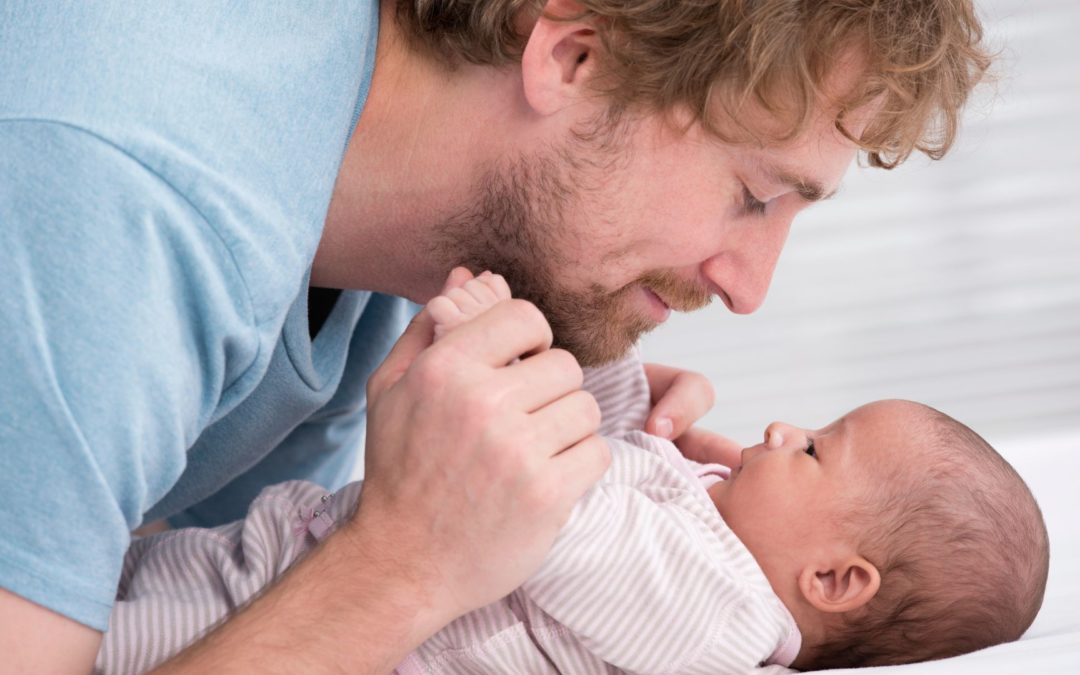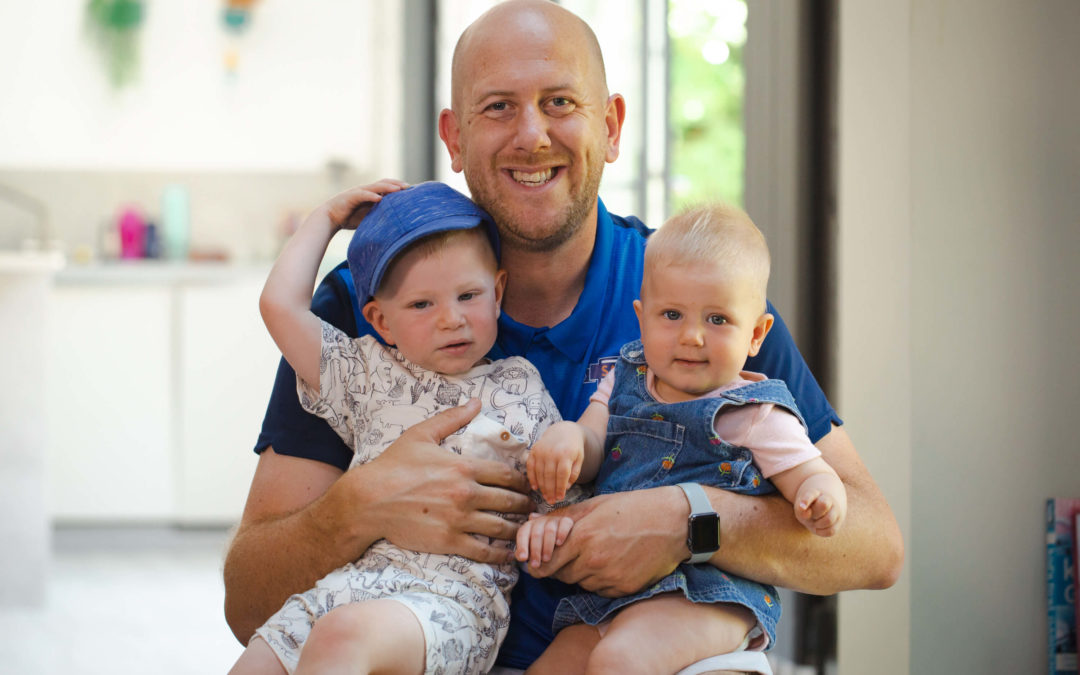One of the milestones in a baby’s development is when it’s ready to move on to solid food. Beware dads, because this stage is a bit of a shocker… if you thought milk sick was smelly and messy, it’s nothing compared with the destruction that mushed up baby food can create. There is also little which will prepare you for suddenly finding partially digested peas, raisins or sweetcorn in a nappy…
The Department of Health advises waiting to wean until your baby is six months old, as by this age your baby’s digestive and immune system is stronger, minimising the risk of food allergies. This is a guide though, and it does not mean that your baby will necessarily be ready to eat full meals at this point! Look for your baby’s own individual milestones, as every baby develops at their own pace. Your little one may be ready to start experimenting with food when they:
- Can sit
- Can hold up their heads
- Show an interest in food
Weaning should always be a gradual process with breast or formula milk continuing to provide the bulk of the baby’s diet (500 to 600ml a day) and only a tiny portion of solid food offered at first.
There are two main ways of weaning – you can choose one or the other – or do a mix of the two! These are:
Traditional weaning which is what most parents think of when thinking of first foods – this means you feeding your baby pureed or mashed food via a spoon. As your baby gets used to it, you slowly change the texture of the food, making it thicker or lumpier until the point (after several months) that your baby will eat what you eat (albeit maybe chopped up!)
Baby-led weaning means letting your baby get on with it by themselves rather than you giving them it on a spoon, no pureeing required – just allowing them to learn how to chew and bite in their own time, and letting them really have fun exploring food.
However you choose to wean is up to you – but do remember not to get too stressed about how much your baby eats in those first few months – it’s mainly about them exploring different tastes and textures, as milk will make up the vast amount of their calorific intake still for the next few months.
Weaning Top Tips
- Check the temperature: Babies are happy eating food at room temperature, so food that’s been stored in the fridge will need to be served into a bowl which is then placed in another bowl of hot water for a few minutes – beware of microwaving food as you can get hot spots which can potentially burn your baby’s mouth. Always stir food well and test it to check it’s not too hot. Only heat up the amount you think your baby will eat, as uneaten heated food must be thrown away. And don’t refreeze any previously frozen food.
- Use a high chair: There will be odd occasions where you have to feed them on your lap, but use a high chair whenever possible. Always strap your baby in securely and do make sure their fingers are well out of the way as you click the food tray in place. Portable fold-up chairs that can be secured to a table top are a fantastic idea for when you’re out and about.
- Go at your baby’s pace: Getting used to solid food is a big step for your baby. They have to adapt to the feel of it in their mouth and learn the art of swallowing and this may all take time. So try not to hurry them.
- Respect their meal times: Babies soon develop a routine for feeding times and although this is never definitive, you do need to be mindful that they will need feeding and with such small tummies, might not be able to wait another half an hour! If you’re going out for a meal, pack some healthy snacks and toys to keep them occupied while you’re waiting to be served.
- Take cover: It is incredible how something so small can cause so much destruction with such a tiny quantity of food. So be prepared. Either have bibs to hand or even consider stripping baby down to their nappy for feed time! Beware banana and avocado, which leave permanent black marks on clothing and also tomato or berry-based dishes, which quickly stain pale surfaces and clothes. Once feeding time is over, make an effort to clear up food spills on the high chair seat, tray and legs and other surfaces while they’re soft and easy to wipe off. Otherwise, you’ll need a chisel to remove encrusted cereal and broccoli, plus the smell of rancid yogurt and fish isn’t a good combo.
- Euh, yuck!: While experimenting with foods, there’s likely to be something that turns your baby right off. If a food has been rejected once, don’t rule it out completely, but try it again in a few days or weeks.
- Try one new food at a time. Sometimes a baby might have a reaction (diarrhoea or rashes) to food – by introducing one new type of food at a time, you will find it easier to identify which food it was. If you do identify a food that seems to be causing a problem, ask your health visitor or doctor for advice.
- Two spoons! Often babies will be determined to get hold of the spoon you are using to feed them! So, to keep them happy, give them their own spoon to hold while you continue feeding them with another.
- All choked up: Babies have a safety mechanism to protect them from chocking, which is that they have a very sensitive gag reflex – it is therefore normal to see your baby gagging as they eat. This is normal and does not mean they are choking. However, sometimes babies do experience choking, and so it is important not to leave your baby unattended while they eat. If they do start choking, try to stay calm. If they can breathe, cry or cough, the obstruction will probably clear on its own. Offer them cooled, boiled water to drink once it has cleared. For severe cases, lay the baby face down along your forearm and with the heel of your hand give up to five back blows between the shoulder blades. Between each blow check their mouth to see if the obstruction has been dislodged. If this fails, turn the baby on to its back and push two fingers into the middle of the chest, inwards and upwards. Repeat five times. Continue with three cycles of back blows and chest thrusts and call 999 if the obstruction remains. If you are worried about knowing what to do in such an emergency, consider doing a First Aid Workshop which will teach you the basics you need to know.








